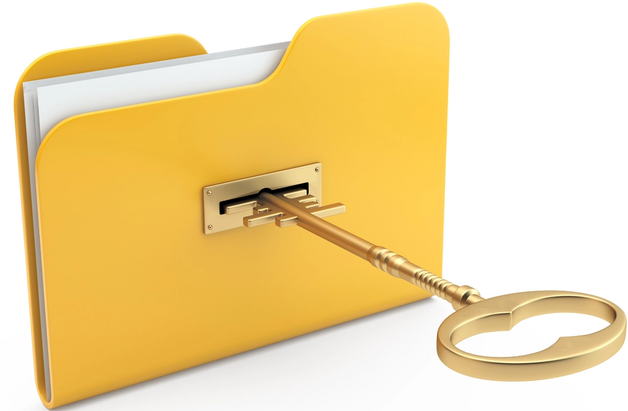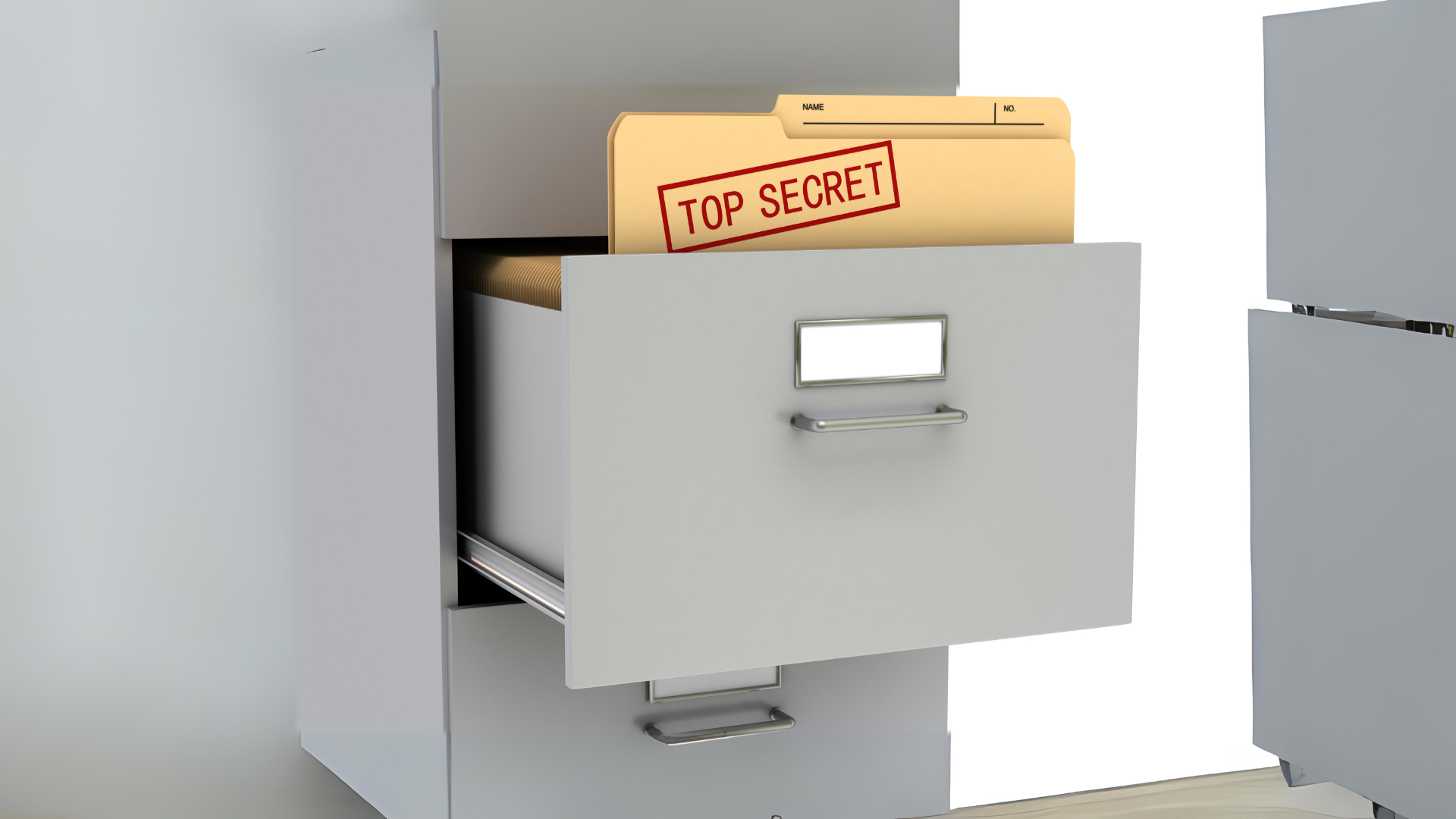A Comprehensive Guide on How to Protect Your Pay Stubs

January 21, 2024
Preparing pay stubs and payroll management is more efficient and convenient in the digital age. Unfortunately, it has also paved the way for cybercriminals to try and compromise data security for businesses, making it a must for employers to learn how to protect pay stubs.
Securing paychecks is crucial because pay stubs contain sensitive employee information, such as their name, address, contact information, and Social Security Number.
In this article, we’ll discuss how you can keep your physical and digital pay stubs secure and ensure your employees and business are protected to avoid facing possible legal action and penalties.
Let’s begin!
Key Takeaways
- Employers and employees must learn how to protect pay stubs to prevent data breaches, identity theft, and phishing scams from successfully taking place.
- To protect digital pay stubs, use pay stub generators, cloud storage, and software-friendly pay stub paper; password-protect company files; and update the company’s payroll software.
- Limit access to employee records, use locked cabinets and storage containers, and dispose of old pay stubs properly and securely to keep printed pay stubs protected.
- Employees can keep their pay stubs for at least one year, provided they have filed their annual taxes. Employers can keep their current employees’ pay stubs for at least three years and store terminated employees’ pay stubs for 12 months.
The Importance of Protecting Pay Stubs
Employers should understand the importance of protecting pay stubs to safeguard employees and businesses from fraud.
Pay stubs contain essential information about employees’ wages and salaries, withheld taxes, and their life, health, and retirement plan contributions. Also indicated in employee paychecks are their names, contact information, and details about their places of residence.
Scammers can use all of the information described above to commit the following types of fraud:
- Identity theft. Scammers use employees' names, contact information, and even Social Security numbers to assume their identities without their knowledge or consent. Identity thieves will then use the stolen personal information to try to access their victim’s bank account and extort money from their relatives and friends.
- Payroll phishing scams. Payroll phishing scams often go hand in hand with identity theft. Once fraudsters successfully steal an employee’s contact information, they create an email domain similar to the one used by their victim at work. They use the forged email to convince the HR personnel to assist them in updating their victim’s account information. If the phishing attempt succeeds, the victim’s salary gets rerouted to the scammer’s account.
- Fake pay stubs. Forging pay stubs is a type of financial document fraud where fraudsters replicate pay stubs to try and qualify for loans, rent apartments, and verify their fictitious employment history. Sometimes, scammers also use forged paycheck documents to file fraudulent tax returns.
8 Effective Ways to Protect Digital Pay Stubs

Protecting digital pay stubs entails using trusted online tools and software that uphold data security and user privacy. The main difference between a digital pay stub vs. a pay slip printed on paper is that the former does not have a physical copy and is sent via email.
Employers typically opt to use paperless pay stubs due to the practicality and convenience they bring regarding payroll management and sending salaries.
Enumerated below are eight practical ways to protect digital pay stubs. Note that the following methods apply to individuals, freelancers, small companies, and corporations alike:
#1. Use a Secure Pay Stub Generator
A pay stub generator is an online tool that lets you generate as many paystubs securely as you want. Our pay stub generator comes with a selection of ready-made templates to help you save time filling out all your employees' information.
All you need to do is fill out the required fields with the necessary information. If you are an independent contractor, specify your client’s information in the section requiring details about the employer.
Aside from our templates, we also offer a built-in calculator to ensure accuracy in calculating employee taxes and salaries. You can also preview your pay stub before downloading a secure PDF copy.
We do not store the previously inputted information, thereby securing your staff's privacy at all times.
#2. Password Protect Your Files
Regardless of whether you run a startup or a larger company, you must be wary of who can access your company’s records and files.
Password-protecting your files ensures that only authorized personnel can access all documents about your workers’ employment, salaries, tax information, dependents, and voluntary deductions.
Remember to update your password every three to six months, and only inform your HR and payroll managers of the changes to maintain confidentiality.
#3. Avoid Sharing Files With Other Parties
While online workplace productivity tools enable file-sharing features that make collaborating easier and less time-consuming, these tools also make companies susceptible to data breaching attempts.
See to it that all work-related files are shared only among your employees or co-workers. If you detect any outsider or unauthorized individual accessing your files, restrict their access immediately and report the matter to your IT personnel.
Google’s productivity tools, such as Google Docs and Google Sheets, let you limit who can access your files by restricting access only to individuals with a link to the specific file. You can also add or remove the people who can open your documents by manually adding their email addresses.
#4. Use a Secure Cloud Storage Solution
A secure cloud storage solution is one of the most popular ways for businesses to back up files and protect pay stubs. Cloud storage is scalable, safe and cost-effective, especially when paired with the best DSPM solutions for added data visibility and control. It offers more storage space and effectively reduces in-house expenses.
You also save office space, synchronize your company’s storage with authorized devices, and recover all essential files quickly. Moreover, cloud storage suits remote work setups and enables seamless collaboration across different departments and team members.
#5. Train Employees
Aside from relying on online tools, much attention is needed in training your employees to protect pay stubs and understand their importance.
The training can include describing the different types of scams and potential dangers arising from poorly secured paycheck records and educating them on pinpointing data breaches and identity theft attempts.
You can also introduce the different types of software used to boost file security and enhance protection for your pay stubs and other essential workplace documents. Remember, training your personnel should apply whether they are tenured or newly hired team members.
#6. Regularly Update Your Payroll Software
For companies using payroll software, make it a point to consistently update the features and system of your chosen software as needed.
Cybercriminals do not stop at the first, tenth, or fiftieth attempt to steal information from businesses and individuals. Sadly, they take extra time studying all kinds of updates and improvements in your security features so they can enhance their phishing methods accordingly.
As such, failing to keep your payroll software up-to-date may limit the features you can use and even make it ineffective and more susceptible to cyberattacks in the long run. You may risk your payroll information and face legal action from your employees.
Coordinate with your payroll software provider for any scheduled updates, and notify them immediately if you encounter any technical errors or wish to increase the restriction on your documents and employee information.
#7. Email the Pay Stubs
Instead of sending digital pay stubs through messaging apps, email them instead. Emailing pay stubs is a more secure way of keeping them protected than sending them through Skype, Messenger, or WhatsApp.
Not to mention, it is simply unprofessional to transfer essential documents via messaging applications.
When emailing paycheck records to your staff, use secure email providers such as ProtonMail and Zoho Mail. You can also create a custom email domain for your business by choosing an email host and connecting your website domain.
In this manner, your employees can quickly pinpoint authentic emails from their supervisors and co-workers from forged emails containing phishing links.
#8. Use Software-Friendly Pay Stub Paper
Believe it or not, a proven way to protect pay stubs entails your pay stub paper of choice. While there is nothing wrong with using standard paper to print your digital papers, software-friendly paper is ideal and secure.
Software-friendly pay stub papers are compatible with most payroll software and online pay stub generators. This type of paper also has security threads and ghost watermarks for added security.
5 Best Practices to Protect Physical Pay Stubs

Now that you know how to protect digital pay stubs, you must also learn how to secure physical pay stubs. Albeit less practical and more time-consuming, using and protecting physical pay stubs remains common among small companies.
That said, here’s how you can protect physical pay stubs:
#1. Store Your Pay Stubs in a Locked Cabinet
Never leave pay stubs exposed and readily accessible to anyone in the company. The most basic way to protect paper pay stubs is to organize them and keep the documents in secure storage, such as a locked cabinet.
Separate the pay stubs of current employees from those of your previous staff to prevent mixing up their employment records.
You can use a traditional lock and key to secure the cabinet or storage area. Better yet, use a padlock with a number combination to avoid misplacing the key. Ensure only authorized staff have a key duplicate or know the passcode.
#2. Use Sturdy Folders
One of the most significant risks of using printed pay stubs is that they are more susceptible to physical and external damages. Keep the pay stubs in sturdy folders and durable office containers to protect them in case of an accident or a calamity.
Remember to label each container correctly to make it easier to find the needed documents and records when managing payroll and filing taxes.
#3. Dispose of The Pay Stubs Responsibly
There is a limit to how long employers can store copies of their employees’ pay stubs. Companies must dispose of these old records once they have exceeded the recommended limit.
Knowing how to protect pay stubs is still crucial, even when disposing of old paycheck records. The key is to ensure none of the sensitive information declared in the pay slips remains visible or readable to other parties not associated with the business.
To do this, you can shred old pay stubs before disposing of them or recycle the shredded documents.
#4. Fax Payroll and Tax Documents
Fax physical payroll and tax documents to your payroll personnel or tax accountant to limit the possibility of fraudsters intercepting all sensitive data related to your employees’ employment and pay stubs.
Be cautious and refrain from faxing the documents or pay stubs to the wrong fax number. Otherwise, you may end up sending the files to a total stranger.
#5. Add Your Company Logo
Adding your company logo to your pay stubs makes the document more legitimate and difficult for scammers to replicate.
You can also use your logo to help banks and financial institutions detect falsified pay stubs and notify you in case a scammer tries to use your business name when applying for loans.
If you are not careful, you or your personnel could get entangled in fake pay stub scams and face penalties.
How Long Should You Keep Your Pay Stubs?
Ideally, employees should keep their pay stubs for at least one year, while employers must keep their workers’ pay stubs for a minimum of three years.
Employees can also dispose of their pay stubs upon filing their annual taxes, as long as they don’t encounter discrepancies in reporting their annual earnings and withheld tax amounts.
On the other hand, employers must keep and protect current employees' pay stubs for at least three years. They also have the option of keeping the paycheck records until they have filed all their employees’ W-2 forms.
If the employee resigns or the company terminates their employment, their former employer may keep their records for a maximum of 12 months following the date of their resignation or termination.
Remember, your business and employee information remain at risk for as long as the pay stub copies exist. As such, taking note of the required time frame for keeping pay stubs serves as a good precautionary measure.
Final Thoughts
Cybercrimes involving identity theft and phishing scams remain rampant to this day, thus making it even more crucial for companies and employees to remain vigilant at all times.
Employees use their pay stubs to secure loans, seek financial assistance from government offices and financial institutions, or get approved for a lease, which makes learning how to protect pay stubs adequately all the more important.
It’s the first line of defense against these fraudulent attempts, so make sure you do your homework and stay safe.


